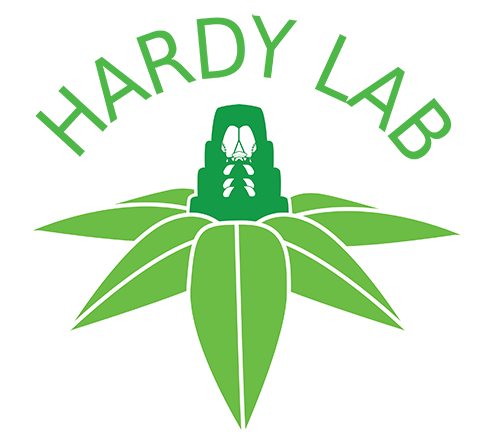Valid Names Results
Marsipococcus maolanensis Deng, Watson & Xing, 2025 (Coccidae: Marsipococcus)Nomenclatural History
- Marsipococcus maolanensis Deng, Watson & Xing 2025: 352. Type data: CHINA: Guizhou Prov., Libo County, Maolan National Nature Reserve, 25°20′7398″N, 107º94′72″E, 706.7 m altitude, on Bridelia retusa, 7/11/2024, Min Deng and Shangmi Hu leg. (GUGC). Holotype, female, by original designation Type depository: Beijing: Forestry University, Beijing, China; Guiyang: Institute of Entomology, Guizhou University, Guiyang, China; accepted valid name Notes: Paratypes: Same collection data as holotype, 6 adult females, 3 adult males, all mounted singly on slides (BFUC) Illustr.
Common Names
Ecological Associates
Hosts:
Families: 1 | Genera: 1
- Phyllanthaceae
- Bridelia retusa | DengWaXi2025
Associates:
Families: 1 | Genera: 1
- Formicidae
- Crematogaster rogenhoferi | DengWaXi2025
Geographic Distribution
Countries: 1
- China | DengWaXi2025
Keys
- DengWaXi2025: pp.361 ( Adult (F) ) [Marsipococcus species]
Remarks
- Systematics: Marsipococcus maolanensis is very close to M. brideliae, but can be distinguished by (character states of M. brideliae given in parenthesis): (i) antennae eight segmented (seven segmented); (ii) anal plates together oval, each outer edge with 7‒11 transparent spots (anal plates together approximately quadrate, each outer edge without transparent spots); (iii) spiracular disc-pores very numerous, each anterior band containing 138‒153 and each posterior band with 168-188 pores (spiracular disc-pores fewer, each anterior band containing 45‒57 and each posterior band with 52‒63 pores); and (iv) derm with abundant, obvious small clear patches (derm without small clear patches). The male of M. maolanensis shows some similarities to that of M. ulubendulensis, but can be distinguished by (character states of M. ulubendulensis given in parenthesis): (i) antennae 10 segmented (9 segmented); (ii) pedicel apparently with transverse reticulations (without transverse reticulations); (iii) antennae each almost as long as body (each about half as long as body); and (iv) tegula with 15–20 hs tegular setae (with 4–6 hs tegular setae). (Deng et al. 2025)
- Structure: In life: Adult female mostly flat but slightly convex in median area; body oval, widest at anterior of abdomen; extremities rounded. Median area of mature adult female brownish, surrounded by a diffuse yellow border that merges into transparent submarginal and marginal areas. Margin with fine, whitish marginal setae (each coated with wax secretion, making them look long), visible to the naked eye against dark green leaf. Eyes minute, black, situated almost dorsad to antennal bases. Adult male body yellowish-brown. Penial sheath straight, about 1/5th of total body length; antennae almost as long as body; wing petaliform, about 5/6th of total body length. Slide-mounted adult female: Body broadly oval, 5.1‒6.4 mm long, 3.7‒4.7 mm wide. Stigmatic clefts distinct and moderately deep, each reniform. Anal cleft approximately 1/4 to 1/6 of body length, closely appressed. Slide-mounted adult male: Body of moderate size, total length about 2.44–2.85 mm, width across triangular plates about 728–831 μm. Antennae each about same length as body; head with 4 pairs of particularly large simple eyes; head and rest of body with almost no setae, those present all hair-like. (Deng et al. 2025)
- Biology: Female and male scales at various developmental stages were usually found together (Deng et al. 2025).
- General Remarks: Description, illustration, and photographs of both sexes by Deng et al. (2025).
Illustrations
Citations
- DengWaXi2025: description, description of male, diagnosis, distribution, host, illustration, key, taxonomy,


